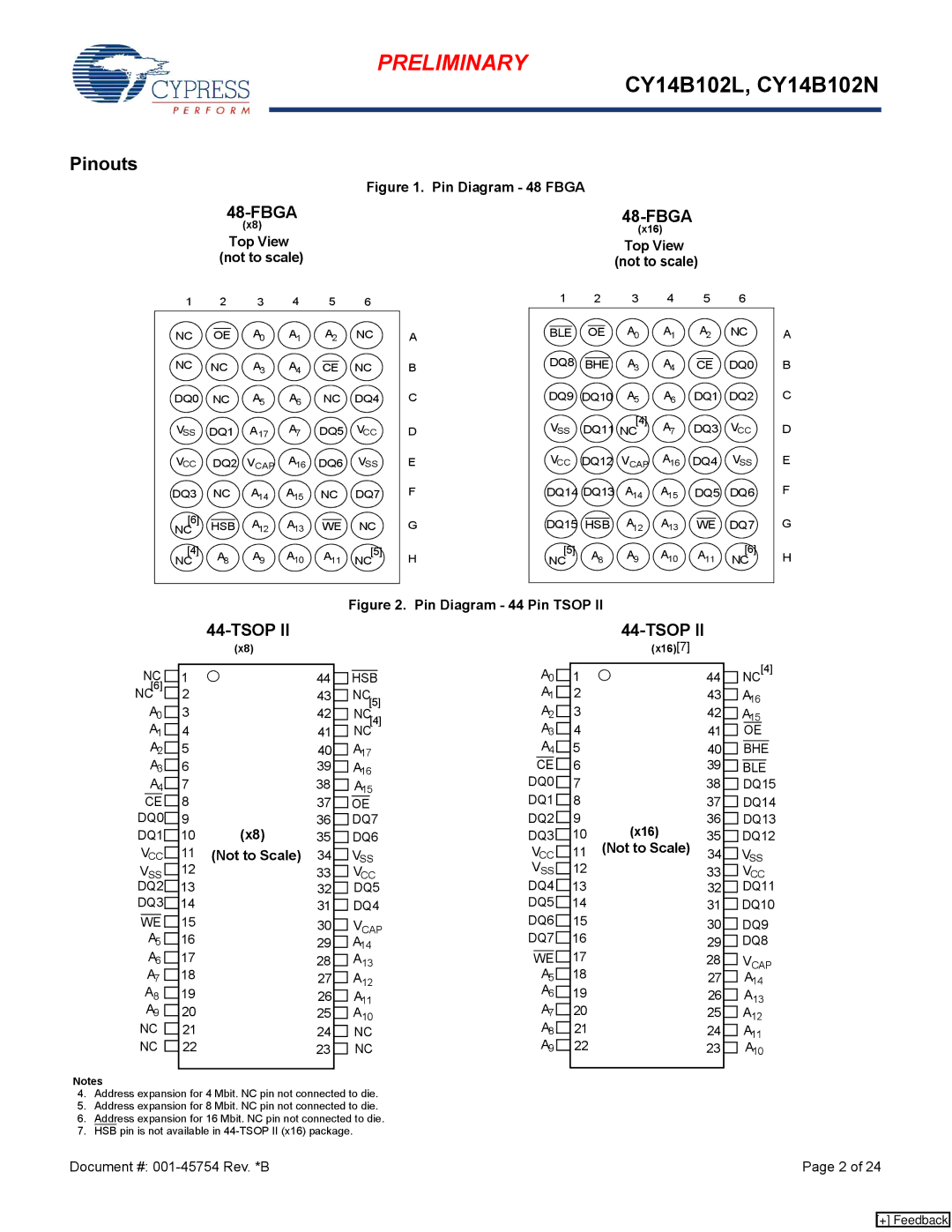CY14B102L, nvSRAM specifications
Cypress nvSRAM CY14B102L is a sophisticated memory solution designed to bridge the gap between volatile and non-volatile memory technologies. This device offers a unique blend of SRAM speed with the non-volatility of Flash memory, making it an ideal choice for applications that require data retention without the need for continuous power.One of the standout features of the CY14B102L is its ability to retain data for over 20 years without power, thanks to its innovative non-volatile SRAM technology. This means that critical information can be stored safely during power outages or system failures, ensuring data integrity in mission-critical applications. The device uses a reliable, self-timed write process, which simplifies the write operation and enhances system efficiency by eliminating the need for complex write management processes.
With a capacity of 1 megabit (128 K x 8), the CY14B102L offers ample storage for a wide variety of applications. Its fast access times, typically around 45 ns, make it suitable for high-speed operations typically associated with SRAMs. This rapid access is paramount for real-time applications where delays can lead to critical failures or data corruption.
The CY14B102L utilizes a CMOS process technology that not only contributes to its low power consumption but also ensures high reliability and durability. Operating in the wide temperature range of -40°C to +125°C, this nvSRAM is well-suited for automotive, industrial, and telecommunications applications.
In terms of connectivity, the CY14B102L supports a standard SRAM interface, simplifying integration into existing systems. Additionally, its ease of use is further enhanced by being available in a variety of package options, allowing designers to select the best fit for their needs without compromising on performance.
In conclusion, the Cypress nvSRAM CY14B102L is a powerful memory device that combines the speed of SRAM with non-volatile storage capabilities. With its extended data retention, fast access times, efficient write processes, and robust design, it is an excellent choice for applications that demand both speed and reliability, making it an invaluable asset for engineers looking to optimize system performance while maintaining data integrity.

